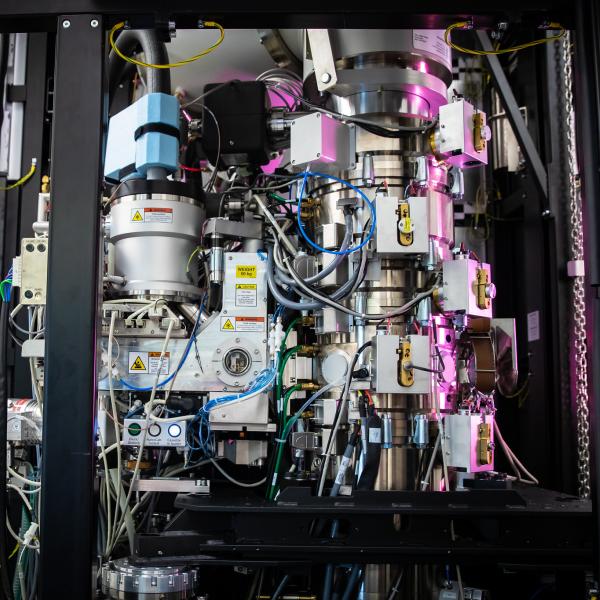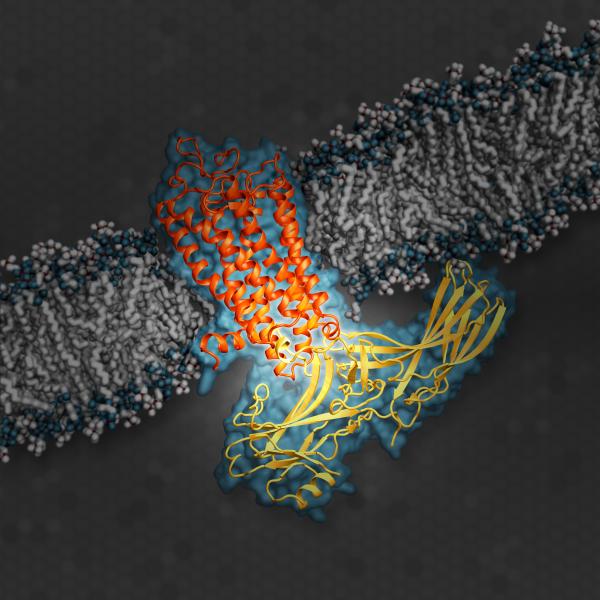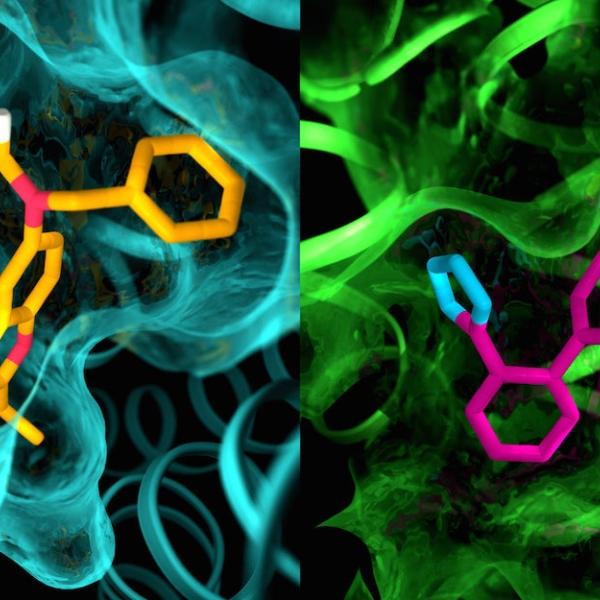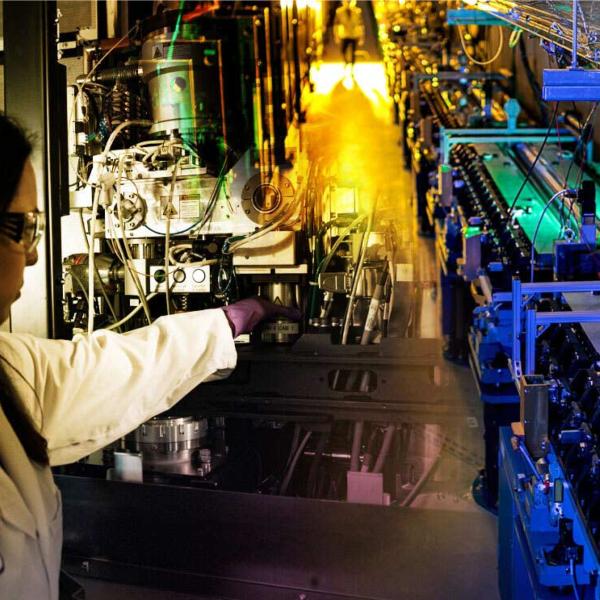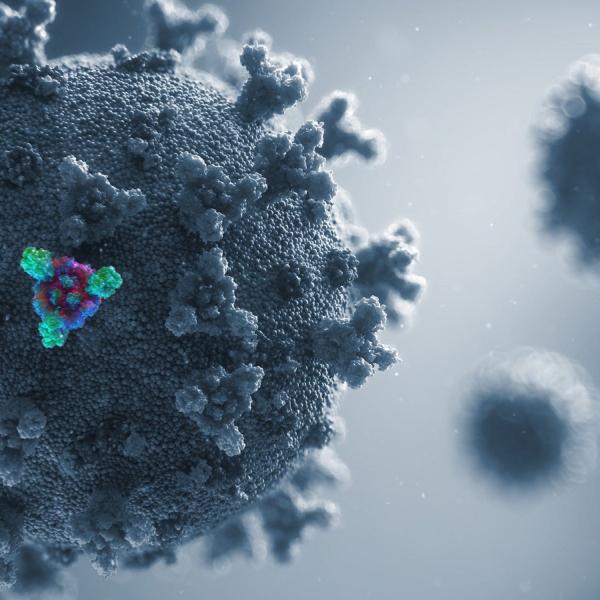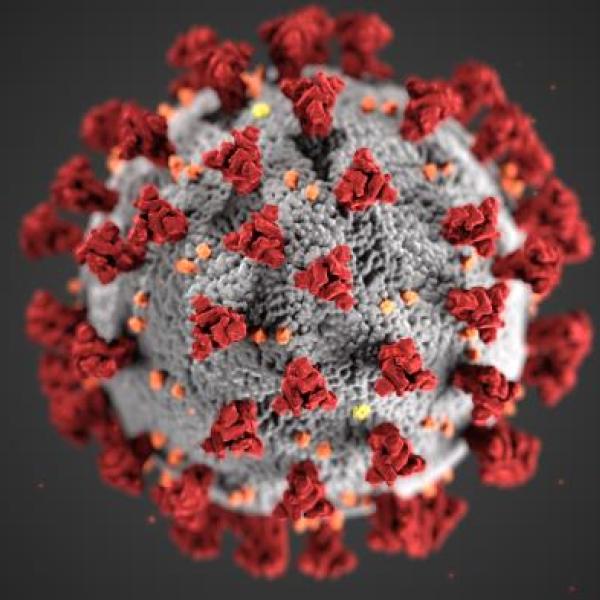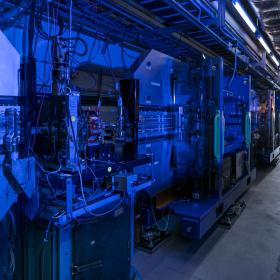Tiny microbes and molecular machines have an outsized impact on human health, and they play key roles in the vast global cycles that shape climate and make carbon and nitrogen available to all living things. SLAC biology advances our understanding in all these areas.
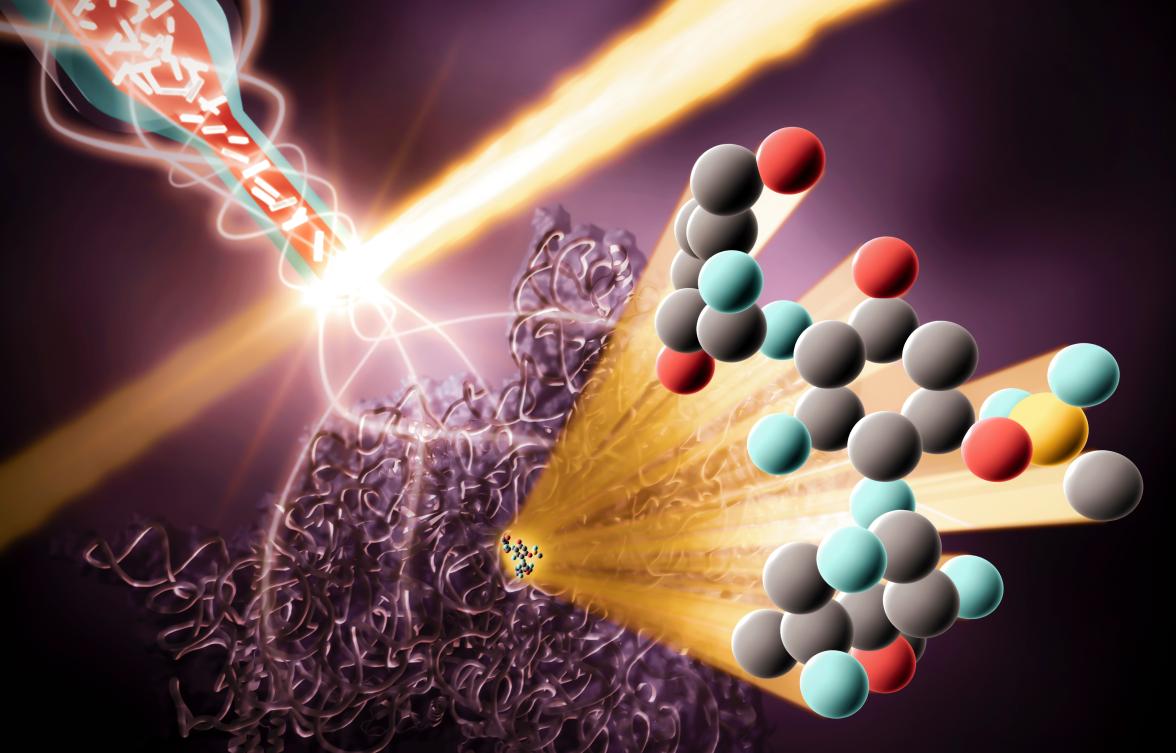
Bioimaging
SLAC has a unique set of tools for looking at viruses, microbes, cells and the tiny machines inside the cell that perform all of life’s functions. This research gives scientists a better understanding of how living things work, what makes us sick and how we can prevent and treat disease.
Deciphering life’s structures
Our X-ray light sources are at the forefront of research to determine the molecular structure of proteins and other macromolecules, which are the building blocks of life; how they interact with disease-causing viruses and life-saving therapeutics; and their role in biological processes in nature.
Fighting COVID-19
SLAC research is helping to reveal how the SARS-CoV-2 virus breaks into cells, how vulnerable tissues respond and how to prevent or treat infection.

